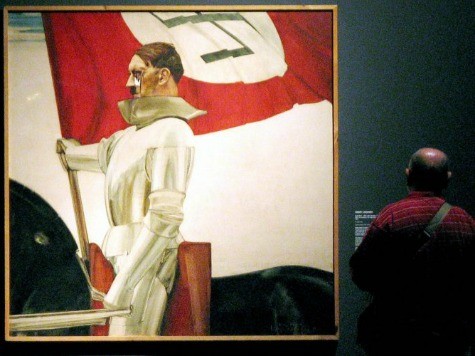Why did Hitler crave the missing panel in the famous Ghent Altarpiece? Maybe because the Nazi’s paranormal research group thought the masterpiece contained a map to the Holy Grail.
On the night of 10 April 1934, one of the twelve oak panels that comprise Jan van Eyck’s famous painting, Adoration of the Mystic Lamb, was stolen from Saint Bavo Cathedral, in Ghent, Belgium. Often referred to as “The Ghent Altarpiece,” this monumental oil painting is arguably the single most influential painting ever made. It is also the most-frequently stolen, having been burgled, in its entirety or in parts, at least six times–quite a feat, considering that it is the size of a barn door (14 x 11.5 feet) and weighs about two tons. It was the most-desired artwork by the Nazis, including Hitler and his second-in-command, Hermann Göring.
The two Nazi leaders actually raced one another to be the first to steal the altarpiece. The Nazi art theft unit, the ERR, captured it first for Hitler, from its hiding place at Chateau de Pau, in the south of France, where the Belgian government had sent it for safe-keeping. But an emissary from Göring appropriated it for the Luftwaffe head’s massive stolen art collection, which included some seven-thousand masterpieces, displayed at his country estate outside Berlin. Hitler got wind of this, and intercepted the altarpiece, sending it first to Castle Neuschwanstein in Bavaria, where it was restored, and then for storage in a salt mine in the Austrian Alps near Altaussee, where the twelve-thousand most famous stolen artworks from Nazi-occupied Europe were kept in secret, destined to feature in Hitler’s planned “super museum,” which would be the size of a city, and display every important artwork in the world. From the Altaussee salt mine, the Ghent Altarpiece and its fellow captives were ultimately rescued, thanks to the combined efforts of Austrian miners and a pair of Monuments Men, Robert Posey and Lincoln Kirstein, who only learned of the Altaussee hoard thanks to a fortuitous toothache that led them to a former SS officer, an art historian who was in hiding as the war drew to a close. The upcoming George Clooney film, The Monuments Men, dramatizes some of these stories, though taking a great many liberties in the process.
Read the rest of the story at The Daily Beast.

COMMENTS
Please let us know if you're having issues with commenting.